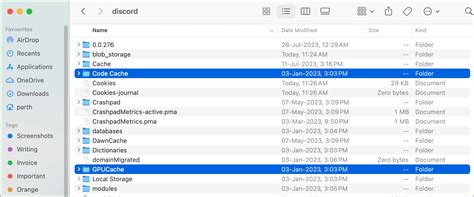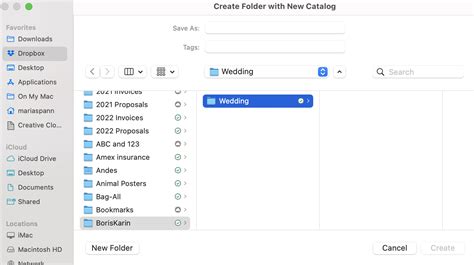In today’s digital age, managing our digital lives has become as crucial as organizing our physical spaces. With the increasing reliance on technology, it’s easy for digital clutter to accumulate, leading to inefficiencies and stress. Effective digital life management involves not only keeping your devices and data organized but also ensuring your online security and privacy. This article explores the best practices for maintaining an orderly and secure digital life, from decluttering your devices to utilizing cloud storage and setting up strong passwords. By adopting these strategies, you can create a streamlined and secure digital environment that enhances your productivity and peace of mind.
Discover more about this topic with shzow.com in detail.
1. Declutter Digital Devices
Decluttering digital devices is the first step toward effective digital life management. Start by deleting unnecessary files, apps, and media that no longer serve a purpose. This includes clearing out old emails, unused apps, and duplicate photos or documents. Organize the remaining files into clearly labeled folders to make them easier to locate when needed. Regularly empty your recycle bin or trash folder to free up additional space. Consider using a storage management tool that helps identify large or redundant files and offers suggestions for cleanup. By reducing the digital clutter on your devices, you not only free up valuable storage space but also improve the overall performance and efficiency of your devices. A well-organized digital environment can lead to a more productive and stress-free experience, allowing you to focus on what truly matters without being bogged down by digital disarray.

2. Implement Strong Password Management
Strong password management is essential for protecting your digital life. Create unique, complex passwords for each of your online accounts. A strong password should include a mix of uppercase and lowercase letters, numbers, and special characters. Avoid using easily guessed information like birthdays or common words. Using a reputable password manager can help you generate and securely store your passwords, making it easier to maintain different passwords for different sites without relying on memory.
Protect Your Digital Life: Simple Steps for Stronger Security
Make it a habit to update your passwords regularly, particularly for critical accounts like banking or email. Boost your defenses by enabling two-factor authentication (2FA) whenever offered. This adds an extra layer of security, requiring a second verification step beyond just your password. Be wary of phishing attempts designed to trick you into revealing your passwords. Never share your login credentials with anyone. By implementing these straightforward measures, you can significantly lower the risk of unauthorized access to your accounts, safeguarding your digital life against potential threats.

3. Utilize Cloud Storage Solutions
Utilizing cloud storage solutions is a smart way to manage and safeguard your digital assets. Cloud storage allows you to store files, photos, and important documents online, freeing up space on your local devices and making your data accessible from anywhere with an internet connection. Start by selecting a reliable cloud storage provider that meets your needs, considering factors such as storage capacity, security features, and cost.
Once you’ve chosen a provider, organize your files into folders within the cloud, mirroring your local file structure for easy navigation. Regularly upload new files and documents to ensure they are backed up and protected. Cloud storage also offers version control, allowing you to retrieve previous versions of files if needed.
For added security, enable encryption for your cloud-stored data and use strong, unique passwords for your cloud accounts. By integrating cloud storage into your digital life management strategy, you can protect your data from hardware failures and ensure that your important files are always within reach, even on the go.

4. Set Up Digital Calendars and Reminders
Setting up digital calendars and reminders is essential for staying organized and on top of your daily tasks. Digital calendars, such as those offered by Google or Apple, allow you to schedule appointments, set deadlines, and plan events with ease. Begin by syncing your calendar across all devices, ensuring you have access to your schedule no matter where you are.
Use color-coding or labels to differentiate between work, personal, and family commitments, making it easier to see what’s ahead at a glance. Set reminders for important tasks and deadlines, and customize notifications to alert you well in advance. For recurring events, such as weekly meetings or monthly bills, automate these entries to reduce manual input.
Additionally, consider sharing your calendar with family members or colleagues when coordinating group activities, making collaboration smoother. By relying on digital calendars and reminders, you can manage your time effectively, reduce the likelihood of missed appointments, and stay focused on your priorities.
5. Regularly Update and Backup Data
Keeping your digital life organized and secure starts with a simple habit: regularly updating and backing up your data. This ensures your information stays current, safe, and easily accessible. Begin by configuring your devices and software to update automatically. These updates frequently include vital security patches and enhancements, safeguarding your systems from the newest threats and ensuring smooth, reliable performance.
Data backups are crucial for safeguarding your information. Implement a regular backup schedule for your essential files, utilizing both local storage, like an external hard drive, and cloud storage to provide redundancy. This dual strategy safeguards your data even if one backup method fails. Employ backup software to automate the process, ensuring automatic file copies at set intervals without manual intervention.
Regularly testing your backup systems is crucial to guarantee their functionality and the inclusion of your most recent data. A current backup provides a swift recovery solution in case of data loss, minimizing downtime and ensuring business continuity.
Regularly updating and backing up your data is crucial for safeguarding your digital assets. This proactive approach ensures the protection of your important information against data loss, cyber threats, and hardware failures. By making these practices a part of your routine, you can rest assured that your valuable data is always secure and readily accessible whenever you need it.
6. Organize Digital Files and Folders
Organizing digital files and folders is key to maintaining a clutter-free and efficient digital environment. Begin by creating a clear and intuitive folder structure that reflects how you work. Group related files together, and use descriptive folder names that make it easy to locate specific documents quickly. For example, create separate folders for work, personal projects, and family-related items, and further subdivide them by year, project, or category.
Within each folder, name your files consistently, including relevant details like dates or project names to help with future searches. Avoid vague file names like “Document1” that offer no clues about the content. To keep things tidy, regularly review and clean up your files, deleting those that are no longer needed or moving them to an archive folder if they must be retained for future reference.
Utilize tools like tags or metadata to add another layer of organization, making it even easier to find what you need. By maintaining a well-organized digital filing system, you can boost your productivity, reduce time spent searching for documents, and keep your digital life running smoothly.
7. Use Productivity and Organization Apps
Using productivity and organization apps can significantly enhance your digital life management by streamlining tasks and improving efficiency. Start by selecting apps that align with your specific needs, whether it’s for task management, note-taking, or project collaboration. Popular options include task managers like Todoist or Microsoft To Do for tracking and prioritizing tasks, and note-taking apps like Evernote or Notion for organizing ideas and information.
Calendar apps, such as Google Calendar or Outlook, help you manage schedules and set reminders, ensuring you stay on top of appointments and deadlines. Project management tools like Asana or Trello are useful for tracking progress on projects, assigning tasks, and collaborating with team members.
Leverage automation tools like Zapier or IFTTT to connect different apps and automate repetitive tasks, saving you time and reducing manual effort. For better focus, consider using apps like Focus@Will or Pomodoro timers to manage your work intervals and breaks.
Regularly review and adjust your app usage to ensure they continue to meet your needs as your tasks and projects evolve. By integrating productivity and organization apps into your daily routine, you can optimize your workflow, enhance organization, and achieve greater efficiency in managing both personal and professional responsibilities.
8. Establish Screen Time Limits
To maintain a healthy balance between your digital life and the real world, it’s essential to establish screen time limits. Begin by setting clear boundaries for daily screen time, encompassing both work and leisure activities. Utilize built-in tools on your devices, such as screen time trackers found on iOS and Android, to monitor and regulate your usage. These tools offer valuable insights into your time spent on different apps and websites, allowing you to pinpoint areas where you may need to reduce your screen time.
To manage your screen time effectively, set specific time limits for individual apps or categories, like social media or games. Also, designate specific periods for screen use. For instance, dedicate certain hours to work-related tasks and separate times for relaxation or leisure activities. Taking breaks between screen sessions is equally important, as it can help reduce eye strain and enhance overall well-being.
To cultivate richer connections, promote a screen-free zone during activities like mealtimes or family gatherings. By deliberately managing screen usage, you can enhance productivity, alleviate digital exhaustion, and establish a more balanced and rewarding daily rhythm.
9. Maintain Digital Security and Privacy
Safeguarding your digital security and privacy is crucial for protecting your personal information and fostering a secure online experience. Begin by employing strong, unique passwords for each of your accounts and explore enabling two-factor authentication (2FA) whenever feasible, adding an extra layer of security. It is recommended to update your passwords regularly and utilize a reliable password manager to securely store and manage them.
To safeguard your devices and software from cyberattacks, ensure they are always running the latest security patches and updates. These updates frequently include vital fixes for vulnerabilities that malicious actors could exploit. Additionally, installing and regularly updating antivirus and anti-malware software is crucial for detecting and mitigating potential threats.
Protect your personal information online by exercising caution. Avoid clicking on suspicious links or downloading attachments from unknown sources. Regularly review and adjust the privacy settings on your social media accounts to limit the amount of personal information shared publicly.
To protect your home network, change your router’s default password and use encryption methods like WPA3 to secure your Wi-Fi connection. Regularly back up your data to ensure you can recover important files if a security breach or hardware failure occurs. By implementing these practices, you can significantly strengthen your digital security and safeguard your privacy in today’s interconnected world.
Effective digital life management is essential for maintaining organization, security, and efficiency in today’s tech-driven world. By decluttering devices, implementing strong password practices, utilizing cloud storage, and setting up digital tools, you can enhance productivity and protect your personal information. Regularly updating and backing up data, organizing files, and managing screen time contribute to a balanced and secure digital environment, ensuring a smoother, more controlled digital experience.
shzow.com
